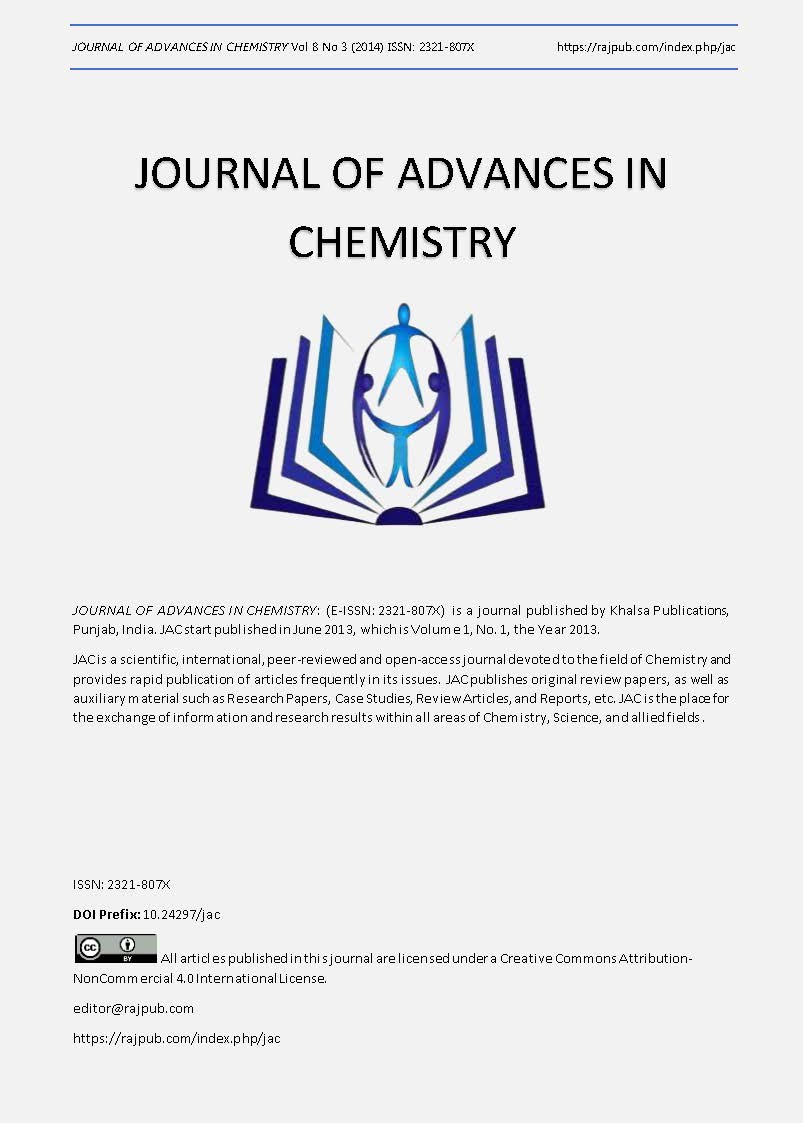Sol-Gel Synthesis, Crystal Structure, Electronic and Magnetic Properties of AlxTi1-xBiO3 (0.0 ≤x≤ 0.33) Oxides
DOI:
https://doi.org/10.24297/jac.v8i3.4052Keywords:
Sol-gel method, powder XRD, crystal structure, DFT calculations, electronic energy band, density of statesAbstract
Synthesis of AlxTi1-xBiO3 (0.0 ≤x≤ 0.33) (S1-S4: x = 0.0, 0.11, 0.22, 0.33) oxides is performed by sol-gel method via nitrate-citrate route. Analysis of the powder X-ray diffraction (XRD) patterns show tetragonal unit cell with lattice parameters: a = 6.6377, 6.6398, 6.6370, 6.6366 Å; c = 6.5445, 6.5391, 6.5259, 6.6583 Å, respectively in S1-S4, with space group P42/mnm and Z=4. Average crystallite sizes determined by Scherrer relation are found to be in the range ~16-36, 18-50, 19-48 and 19-41 nm in S1-S4, respectively. On Rietveld refinement of unit cell structures the agreement factors are lowered to: Rp= 98.28, 97.65, 98.85, 94.29 %; Rwp= 97.11, 96.76, 97.92, 95.73 %; Rexp= 0.09, 0.09, 0.09, 0.09 % in S1-S4, respectively. Fourier electron density mapping show irregular contours around Bi3+, Ti3+ and O2- ions due to significant ionic character in Ti-O and Bi-O bonds in the materials. Presence of hysteresis loops in the range -6 kG to +6 kG at 300 K with magnetic susceptibility values in the range 5.926 x 10-8 - 6.461 x 10-8 emu/gG in S1-S4 show soft ferromagnetic nature of the oxides. Density functional theory (DFT) calculations using CASTEP (Cambridge Serial Total Energy Package) programme package show energy band gap, Eg,  ~ 0.01-0.02 eV indicating weak semiconducting nature of the oxides. The valence band (VB) predominantly comprises O 2p, Ti 3d, Al 3p and Bi 6p orbitals, and the conduction band (CB) comprises mostly O 2p, Al 3p and Bi 6p orbitals with extension of band tails narrowing the energy band gap.
Downloads
Downloads
Published
How to Cite
Issue
Section
License
 All articles published in Journal of Advances in Linguistics are licensed under a Creative Commons Attribution 4.0 International License.
All articles published in Journal of Advances in Linguistics are licensed under a Creative Commons Attribution 4.0 International License.




